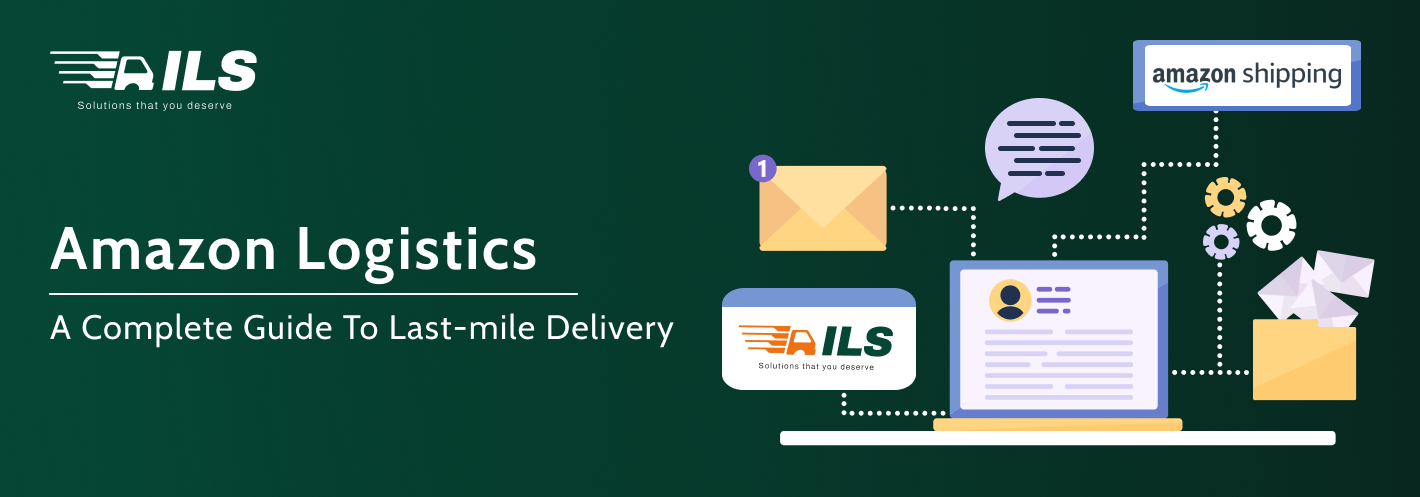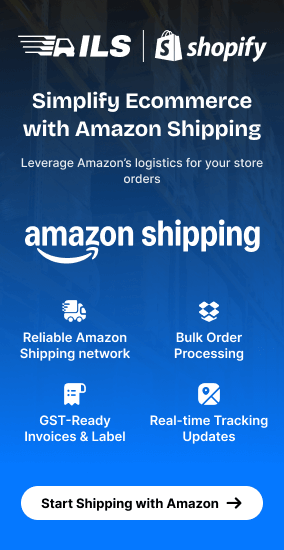Amazon Logistics: A Complete Guide to Last Mile Delivery
Courier Partners
E-commerce has now become a phenomenal money-making industry and is catching wildfire. Amazon has always dominated the industry for various reasons. Mainly because of its complex logistics network, Amazon is the flagship for delivering products to customers quickly and efficiently. Last-mile delivery is at the heart of this operation, a significant and vital facet that brings businesses to consumers at their very home doorstep. In this blog, we will try to understand Amazon Logistics, the peculiarities of its last-mile delivery model and its significance for e-commerce businesses.
Integrate Delhivery Courier Services with your eCommerce website with the help of the Indian Logistics Services app, a multi-courier partner integration app, and get the top shipping benefits with Delhivery. 18000+ pin codes Delivery, Cash on Delivery(COD) payments, Email & SMS tracking updates, and many more. Read out our full blog to learn more.
What is Last-Mile Delivery in Amazon?
The last mile delivery is the final step of the delivery process, right before packages are transported from a transportation hub to their destination, usually the buyer's home or other residence. It sounds relatively easy, but it is the most intricate and costly part of the delivery process, with over 50% of all shipping costs associated with last-mile search.
Amazon is relentless in their last-mile delivery strategy to improve speed and lower costs for customer experience. It is based on two main points: fast and stable. With advanced routing, technology and a pool of hundreds of delivery drivers, Amazon delivers packages to customers without fail, even if the locales are remote.
Amazon differentiates last-mile delivery through customer-centric services. Take Amazon Key, where delivery people can leave packages inside homes, garages, or cars when customers are not around. These innovations showcase Amazon's focus on eliminating common last-mile delivery obstacles.
Amazon Last-Mile Delivery: What Type Of Last-Mile Strategy Do They Have?
Amazon uses several techniques to bolster fast last-mile delivery. These include:
Amazon Delivery Service Partners (DSPs)
It partners with small businesses and entrepreneurs to form delivery wheels. These are not Amazon employees but independent DSPs working under the Amazon umbrella, delivering packages in their geographical area. The availability of the DSP program has helped Amazon grow its delivery network quickly.
Amazon Logistics Tracking
Amazon Logistics Tracking feature offers efficient order tracking for your products, ensuring clarity and convenience. The tracking features give you real-time updates, so you can monitor your parcel from dispatch to doorstep.
Amazon Flex
The program recruits independent workers who use their vehicles to deliver packages. These drivers ("Flex drivers") control their hours and deliver packages within a short distance from home. Thus, this flexible model is in great demand by drivers wishing to earn some extra money, and during busier days, Amazon meets the delivery requirements.
Electric & Autonomous Vehicles
Amazon has poured money into greener delivery options like electric vans and drones. Amazon received a robotic delivery vehicle, Amazon Scout; the company rolled out its own driverless robot to transport small items on city streets. Such initiatives display Amazon's approach to thinking ahead and promoting sustainable industrial innovations.
Delivery Services
The company partners with third-party logistics solutions providers for last-mile deliveries in regions where its delivery network has yet to mature fully. This guarantees coverage across a wide area with little need for physical infrastructure.
Amazon Hub Lockers and Counters
Amazon has self-service lockers and counters in convenient locations like supermarkets and malls for customers who want to collect their orders rather than have them delivered. They can reduce reliance on direct-to-doorstep deliveries.
Various methods of last-mile delivery using Amazon logistics
Amazon adopts a multi-pronged strategy to last-mile delivery, responding to various customer requirements and operational parameters:
Prime Delivery: An Amazon Prime member can enjoy this service with a promise of Same-Day and Next-Day Delivery for eligible items.
Standard Delivery: For non-Prime customers, Amazon has standard delivery options that are cost-effective and not as fast.
Amazon Fresh and Grocery Delivery: Amazon is delivering groceries and other perishable goods to the doorsteps of its customers through both Amazon Fresh and Whole Foods.
Large Item Delivery: Personnel specifically trained for large items, including furniture and appliances. They are based on product flavour and customer expectations; you consistently deliver whatever your best-class services are.
Importance of Last-Mile Delivery from the E-Commerce Perspective
Customer Satisfaction
While shopping online, the delivery service quality makes a noticeable contribution to a customer's satisfaction in today's competitive e-commerce environment. Reputable last-mile delivery is fast and reliable, building trust for repeat purchases.
Competitive Advantage
Last-mile delivery is so essential that businesses with strong last-mile systems, such as Amazon, get a competitive advantage. This gives them room to capture more customers with faster deliveries and boost their market share.
Operational Efficiency
Optimizing the last mile can be a cost-saving measure that will proactively reduce fuel usage, reduce labor costs, and avoid delivery mistakes. E-commerce businesses enjoy fatter margins as a result of these economies.
Sustainability
People are becoming more aware of the environment, and businesses understand the importance of green delivery solutions. Green delivery is called using electric vehicles and drones to reduce pollution. Amazon uses these for last-mile deliveries. This way, businesses can protect the environment and fulfil customers' expectations.
Urban Challenges
Cities have various challenges for delivery, like heavy traffic, limited parking space, and narrow roads. Last-mile delivery helps solve these issues altogether. By setting up local delivery hubs and using innovative transportation methods, eCommerce companies can ensure that deliveries reach their customers smoothly and hassle-free, even in busy urban areas.
Data Insights
Last-mile deliveries use advanced systems to gather helpful information, like delivery preferences, demand trends, and how accurately the process is working. This data helps businesses enhance their delivery methods and ensure customers have a hassle-free and satisfying experience.
ILS - Indian Logistics Services with Amazon Logistics

In today's world of e-commerce, businesses require a seamless and reliable logistics solution for delivering packages efficiently to customers. Indian Logistics Services (ILS) provides multi courier partner integration, connecting businesses with reliable courier partners, also including Amazon Logistics. When businesses partner with ILS, they can use Amazon's last-mile delivery capabilities along with other leading courier partners. This integration helps them deliver quicker and cost-effective deliveries.
Optimize your shipping and logistics by selecting the right courier partners for your eCommerce business and reading the blog to know delivery processes, decrease costs, and improve customer satisfaction. And implement intelligent solutions for efficient operations. Elevate your eCommerce business now with the ILS Portal Indian Logistics Services app.
ILS Portal Effortlessly connects Amazon Shipping to simplify your shipping operations and expand your delivery network.
Conclusion
Amazon Logistics has reshaped the e-commerce industry with a focus on last-mile delivery. The company, which has developed pioneering systems such as Amazon Flex and has achieved pioneering levels of speed, productivity, and customer devotion, has redefined the sector. Companies that understand and consolidate these designs into their operations can achieve a significant competitive advantage. Last-mile delivery isn't just the last mile of the supply chain; it's where customer expectations intersect with operational economic realities. By focusing on the final mile of innovation, companies can raise money at will.
FREQUENTLY ASKED QUESTIONS:
- What does it mean by Amazon's last-mile delivery?
- Why does Amazon deliver so fast?
- What are Amazon Hub lockers?
The last stage in the Amazon logistics supply chain is the final delivery of packages from local hubs to the doorsteps of customers; this process is known as last-mile delivery.
It has well-equipped programs such as Prime, Delivery Service Partner (DSP), Flex & many sophisticated technologies such as route optimization & driverless vehicles to make its deliveries faster and always on time.
Amazon Hub Lockers are self-service kiosks where customers can retrieve their packages at a time that is convenient for them, cutting down on home delivery reliance.

